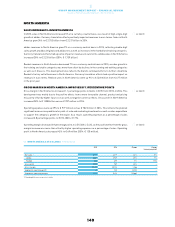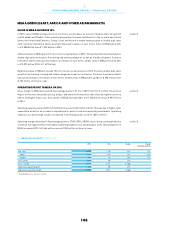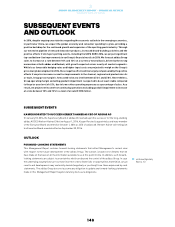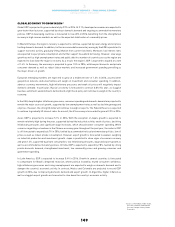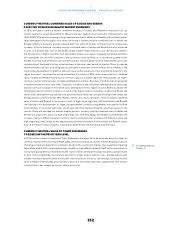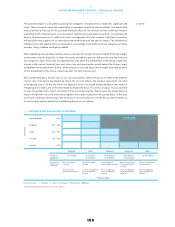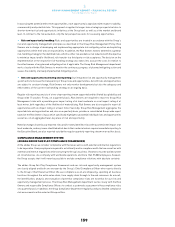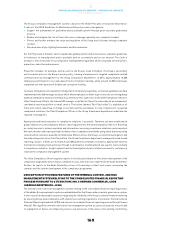Reebok 2015 Annual Report Download - page 154
Download and view the complete annual report
Please find page 154 of the 2015 Reebok annual report below. You can navigate through the pages in the report by either clicking on the pages listed below, or by using the keyword search tool below to find specific information within the annual report.GROUP MANAGEMENT REPORT – FINANCIAL REVIEW
Subsequent Events and Outlook
150
3
SPORTING GOODS INDUSTRY EXPANSION TO CONTINUE IN 2016
In the absence of any major economic shocks, we expect the global sporting goods industry to grow at
a mid-single-digit rate in 2016. In particular, the industry is projected to benefit from major sporting
events, such as the UEFA EURO 2016 as well as the Rio 2016 Olympic Games. Consumer spending on
sporting goods in the emerging economies is expected to grow faster than in the more developed markets.
Private consumption, supported by wage increases in many developed economies, is forecasted to improve
moderately in 2016, promoting the modest industry expansion in those markets. However, wage growth in
the emerging economies is predicted to continue to add significant costs to the industry, especially where
the industry sources and manufactures sporting goods. Many sporting goods retailers will continue to move
to a more omni-retail business model with significant emphasis on mobile. E-commerce and investment
in digital are anticipated to remain growth areas for the industry.
In Western Europe, lower energy and oil prices should positively impact domestic demand and consumer
spending in the sporting goods industry. The region’s industry, and in particular the football category, is
expected to gain momentum due to the UEFA EURO 2016, which is hosted by France. In the European
emerging markets, high inflationary pressures together with low oil prices and the geopolitical tensions
in Russia and Ukraine provide additional potential risk of depressing sentiment and economic activity,
which is expected to negatively impact private consumption and growth in the sporting goods industry.
In the USA, industry growth rates are expected to be ahead of the economy’s overall growth. E-commerce
channels are forecasted to remain strong and move even further towards the mobile environment. The trend
towards social fitness is set to continue, with class-based fitness activities and other shared experiences
gaining significant traction. Casual and retro silhouettes are projected to remain strong across a variety of
categories, including running. The US golf market is expected to remain challenging and will most likely
continue to face structural challenges.
In Greater China, declining inflationary pressures, strong wage growth and domestic consumption are
predicted to propel the sporting goods industry in 2016. In addition, rising sports participation, strongly
supported by the Chinese government, is projected to continue to boost sportswear demand. In Japan, the
government’s stimulus programmes are forecasted to positively impact consumer sentiment and spending,
despite subdued wage growth. Most of the other Asian markets, especially India, are projected to see robust
sporting goods sales growth in 2016.
In Latin America, the sporting goods industry is forecasted to grow modestly in 2016, mainly benefiting from
the Olympic Games, which are being hosted by Brazil. However, headwinds from high inflation, weakness
in labour market conditions as well as low commodity prices are expected to have negative implications
for consumer spending in the region’s largest economies, e.g. Brazil and Argentina, which will slow down
the industry’s overall growth.


